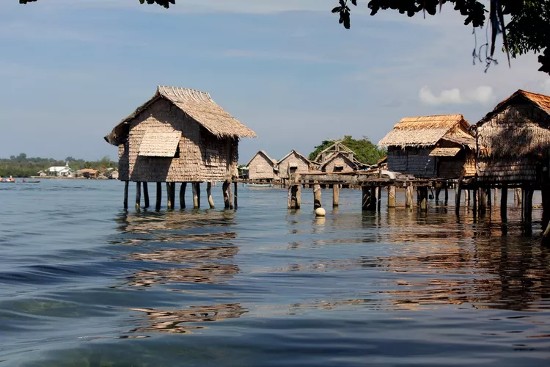This week the 52nd Pacific Islands Forum will convene in the Cook Islands. This annual event brings together 18 Pacific island nations that include Australia, Cook Islands, Federated States of Micronesia, Fiji, French Polynesia, Kiribati, Nauru, New Caledonia, New Zealand, Niue, Palau, Papua New Guinea, Republic of Marshall Islands, Samoa, Solomon Islands, Tonga, Tuvalu, and Vanuatu.
This region of the planet is currently dealing with the latest El Niño traversing the mid-Pacific Ocean which weakens prevailing trade winds, moves warmer water to the east and clouds to the west causing changes in precipitation and sea levels. Many in the group are threatened by drought when El Niño events occur. Add atmospheric warming from greenhouse gas emissions (GHGs) produced elsewhere and the region’s environmental challenges start to add up. Most members of the forum, Australia and New Zealand being the outliers, are seeking the help of richer countries to finance mitigation and adaptation, in addition to receiving loss and damage compensation promised at the time of the signing of the Paris Climate Agreement in 2015.
Rising sea levels pose a particular challenge to many of the Pacific island nations. The Pacific is rising faster than other oceans. The rate amounts to 4 millimetres (0.157 inches) annually compared to 3.4 being the average globally. That doesn’t sound like a lot but it translates to 92 millimetres (3.62 inches) since the turn of the 21st century.
Here are a few examples:
- Kiribati, is a nation of 33 small island atolls with a little over 2 metres (6.5 feet) of clearance between current altitude and sea levels. Every high tide and Pacific storm erodes more of the nation away.
- The Solomon Islands include 992 distinct islands and atolls. of which 5 have disappeared since 1947 as Pacific Ocean levels climb and six more have seen erosion remove 20% of their land areas.
- The 274 Torres Strait Islands that lie between Australia and New Guinea have watched rising sea levels invade freshwater aquifers and cause coastal erosion.
- The five Carteret Islands that are part of Papua New Guinea lie at or near sea level. The highest point of land stands 1.5 metres (5 feet) above the encroaching waters of the Pacific Ocean. The inhabitants are already migrating as the waters rise.
- The 1,225 Marshall Islands spread over 29 coral atolls with most less than 2.1 metres (7 feet) above sea level are disappearing at an alarming rate.
- And then there is Tuvalu whose atolls and islands on average stand just under 2 metres (6.5 feet) above sea level. The rising Pacific poses an immediate threat to its citizens who have been putting up a fight building up dunes and coral debris that washes ashore to hold back the ocean.
So what will happen as our warming planet and rising oceans devour these nations? The migration of their inhabitants is inevitable. Will they then cease to be citizens of their respective nations?
Tuvalu has been looking at the nature of its continued existence after the Pacific wipes it out. Current international law defines a nation as having a physical presence and a permanent population. But Tuvalu wants that definition to change by creating a digital version of itself. The digital Tuvalu would preserve its cultural heritage and provide continuing services to its citizens regardless of where they end up.
Tuvalu also wants its patch of the Pacific Ocean to remain an exclusive economic zone (EEZ) even when the islands are no longer there. EEZs were established by the United Nations Law of the Sea, agreed to in 1982. The EEZ gives a nation sovereign rights to explore, exploit, conserve, and manage a physical area of the ocean from below its seabed to the waters above. The current definition of EEZ is measured from a nation’s shoreline to a distance of 321 kilometres (200 miles). But what happens when there no longer is a shoreline from which to measure? Tuvalu is claiming that the EEZ should survive its physical disappearance which means an area of the Pacific Ocean amounting to almost 750,000 square kilometres (almost 290,000 square miles) can remain a source of income for the diaspora. The tuna industry has been a mainstay of the island nation’s economy. worth billions of dollars annually, the earnings from it would continue to provide Tuvalu citizens with healthcare, pensions and other government services regardless of where they end up living.
















